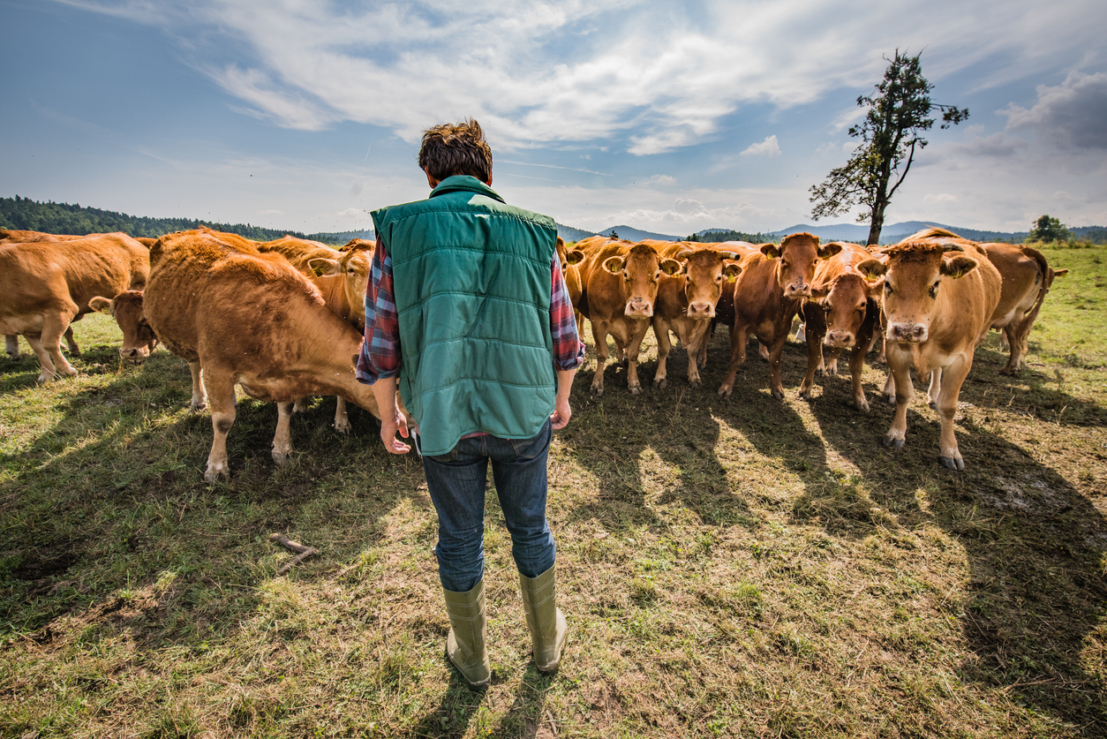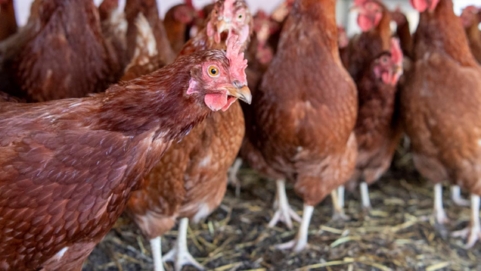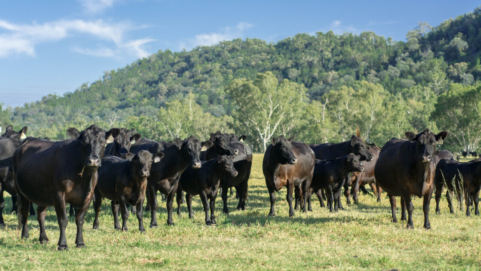National Biosecurity Action Plan
AMA’s submission on the draft National Biosecurity Action Plan
- Submissions
- Biosecurity
- 22 August 2024

National Biosecurity Action Plan
AMA’s submission on the draft National Biosecurity Action Plan
A system is only as strong as its weakest link – a failure in one part of the system could potentially place the entire system at riskand have far-reaching impacts. It is therefore essential that biosecurity functions, activities and actions prioritise effective and efficient communication, partnership, knowledge sharing and stakeholder engagement at all scales, from local to federal and international levels.
National Biosecurity Action Plan
Priority Areas
NBS priority area 1: Shared biosecurity culture
AMA supports the goal to build a shared culture where all stakeholders understand, care about,
contribute to and take responsibility for biosecurity. Effective biosecurity depends on the interconnectedness of many different systems in multiple locations that integrate information and activities across national, regional, local and individual scales, both within and outside our national borders. A system is only as strong as its weakest link – a failure in one part of the system could potentially place the entire system at risk and have far-reaching impacts. It is therefore essential that biosecurity functions, activities and actions prioritise effective and efficient communication, partnership, knowledge sharing and stakeholder engagement at all scales, from local to federal and international levels.
NBS priority area 2: Stronger partnerships
AMA supports the priority given to building stronger partnerships across the biosecurity system.
Communication, transparency, mutual trust and understanding of, and between, stakeholders
and contexts for biosecurity are essential. Building strong relationships across jurisdictional
borders is vital, whether they be local, regional, national or international.
AMA supports efforts to protect Australia’s biosecurity via engagement, monitoring and
surveillance overseas in order to prevent exotic diseases and pathogens from entering Australia.
The direct and indirect costs of an emergency animal disease response escalate dramatically
once a disease is detected. The priority must always be to keep exotic animal diseases out of
Australia, rather than trying to control or eliminate a disease post-incursion.
In Appendix B, AMA notes that partnerships should include key industry associations, including
Animal Health Australia, Meat and Livestock Australia, the Australian Veterinary Association and time-limited.
the National Farmers Federation. These organisations are key conduits for the dissemination of
trusted advice to those directly affected by biosecurity actions and responses, and engagement
with them should be prioritised. Local authorities and communities are also valuable sources of
local knowledge and understanding of potential risks, opportunities and resources in an area.
NBS priority area 3: Highly skilled workforce
AMA supports the focus on building a sustainable and capable biosecurity workforce. Flexibility
and adaptability are needed to ensure the biosecurity workforce is appropriately trained,
resourced, connected and integrated to identify, detect and respond effectively and efficiently to
both direct and indirect biosecurity threats.
The biosecurity workforce extends far beyond ‘official’ biosecurity roles to include multiple other
critically important sectors. Veterinarians are critical in any emergency animal disease, as are
the veterinary medicines and tools they use. Farmers and animal owners are at the front line and
must be well informed on signs and symptoms to watch for in their animals and on their
properties, and know what do to if they observe something of concern.
All Australians, including those who may not have everyday involvement in agriculture,
contribute to effective biosecurity responses. For example, foot-and-mouth disease (FMD) is
endemic in many places that Australians travel to or import goods from regularly, including South Africa, Indonesia, Thailand and India. Travellers to regions with endemic disease threats (to animals, plants or people) expect closer biosecurity scrutiny on their return to Australia, such as the declaration and inspection of goods that may pose biosecurity risks to Australia. The recent
detection and spread of FMD in Bali, a major tourist destination for Australians, has highlighted the need to ensure all Australians understand and respect biosecurity measures. This example
also demonstrates the importance of working with international partners to control disease
spread at the origin to prevent the disease reaching Australia.
Improving community knowledge of invasive plants and insects provides greater opportunities for opportunistic detections by members of the public. For example, khapra beetles were initially
detected by a consumer who had purchased household goods imported into Australia. This
particular consumer was (fortunately) cognisant of risks from exotic pest species, captured the
beetle and contacted the appropriate authorities. The general public are more likely to simply
reach for the household insecticide to deal with a strange insect, thus the incursion of a
potentially devastating pest species could go unnoticed. Public education in this area could be
extremely valuable.
NBS priority area 4: Coordinated preparedness and response
AMA supports a focus on improved coordination, collaboration and resource sharing across the
biosecurity system. Nationally coordinated approaches to surveillance and data sharing are
essential. Mutual trust and transparency across the system supports effective information
sharing and allows resources need to be readily deployed when- and where-needed in order to
deliver rapid and effective responses to biosecurity incursions.
Strong biosecurity is invaluable to mitigate the significant costs of responding to and controlling
a preventable disease outbreak. If Foot and Mouth Disease (FMD) occurred in Australia, it would
be devastating for the meat and wool industries, halting exports for at least six to 12 months and
has been estimated to cost the industry up to $80 billion over ten years.1 This would have
significant impacts on both food availability and cost for domestic consumers, as well as trade
partners.
Individual actions are an essential component of ‘on the ground’ activities that support everyday
management of biosecurity risks. Engagement and understanding by individuals is essential to
facilitate surveillance, compliance, and other practical biosecurity measures that may be
required. Farmers and local veterinarians are often the first to notice unusual disease activity, so
it is critical that they are engaged in and well informed about biosecurity risks, and their role and
responsibilities if a disease occurs, such as notifying authorities, isolating affected animals, and
enacting strict biosecurity protocols for entering/leaving properties. The importance of obeying
farm signage related to biosecurity is likely underappreciated by the general population.
Climate change will pose diverse and increasing threats to biosecurity. Changing environmental
conditions will alter the distribution and behaviour of many animal and insect species, in turn
leading to changing distributions of vector-borne diseases. Flies, ticks, mosquitoes and rodents
are common animal disease vectors that can quickly spread into new areas in favourable
environmental conditions where they have not been previously detected or routinely looked for,
and where the animal (and human) population may be immunologically naïve. Environmental
changes can also result in altered disease transmission routes. For example, if the preferential
target species for a mosquito is not found in the new environment, the mosquito may target a new species. Environmental stressors can also result in increased infectivity and pathogen
virulence.
Biosecurity risks posed by changes to known disease distributions may be subtle and not
immediately apparent, hence there is a need to ensure that biosecurity systems are responsive
and capable of detecting both direct and indirect risks. The use of climate data to inform pathway
surveillance is a good example of where data sharing can maximise the value gained from routine
environmental and biological monitoring activities.
Regulatory settings are an important component of biosecurity. The ability of animal health
companies to maintain business continuity and the capacity to develop and provide critically
important veterinary medicines depends on a regulatory environment that is reliable, efficient
and predictable. Disruptions related to the COVID-19 pandemic illustrate the need for flexibility
and adaptability in the biosecurity system to mitigate the impacts of external stressors when
‘business as usual’ may not be possible.
In the case of an exotic animal disease incursion, Australia’s ability to respond quickly and
effectively (by approving and distributing a new vaccine or specific treatment, for example) will
be critical. Flexibility in the biosecurity system in such circumstances, for example, could
facilitate streamlined import procedures for animal medicines (or ingredients) manufactured
overseas.
If an exotic animal disease is detected, it is critical that veterinary medicines can be brought into
Australia quickly and efficiently. For example, if FMD was detected here, a vaccine would need
to be sourced from Europe as quickly as possible. It is important that our biosecurity framework
has the capability and flexibility to respond quickly to emerging threats and emergency
Australian borders, and risk-based flexibility in satisfying non-critical regulatory requirements.
NBS priority area 5: Sustainable investment
AMA recognises the importance of strong biosecurity for all Australian and our way of life.
Developing and maintaining sustainable funding and investment in biosecurity should be a high
priority. Research to quantify the value of various biosecurity activities may be helpful for
justifying expenditure and to secure consistent, predictable funding, especially for core
elements of the system.
The agricultural sector is a multi-billion-dollar industry that is critical to Australia’s economy.
Outbreaks of animal diseases can have catastrophic and far-reaching impacts on animal welfare
and agricultural industries, with severe ramifications for the entire agricultural trade sector,
domestic animal health, food affordability, food safety, public health and the environment.
Although there are already various legislative and regulatory arrangements and deeds in place to
respond to animal disease outbreaks and incursions, regular review of emergency response
arrangements and deeds (such as EADRAs) are important to ensure that the costings and
governance arrangements in those deeds remains relevant and appropriate to enable an
effective response to disease incursions.
NBS priority area 6: Integration supported by technology, research and data
Technological advances can facilitate timely, effective communication across jurisdictions and
stakeholder groups, and support information sharing and monitoring activities. Better
communication and data sharing will support informed decision-making and effective allocation
of resources.
AMA suggests that the proposed future activity develop a national biosecurity data strategy is
prioritised for action. There are considerable legal and ethical implications to be considered
relating to data collection. It is critically important to build trust and transparency with
stakeholders, particularly those who would be expected to contribute data and those who will
have access to that data. Clarity on what data is to be collected, from whom, when, how and for
what purpose, and the establishment of protocols for transmitting, storing, sharing and using
biosecurity data, as well as privacy and confidentiality matters, must be in place from the start
of data collection.
AMA would also suggest that a national diagnostic submission and testing system for notifiable,
exotic and emergency animal diseases is prioritised. Barriers to testing for vets and farmers, such
as cost, convenience and administrative requirements, can strongly influence the number of
specimens sent for testing. This can be particularly important in the early stages of a disease
outbreak when opportunities for containment may be


